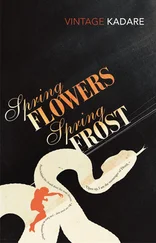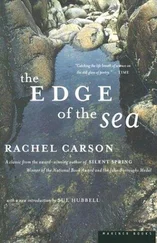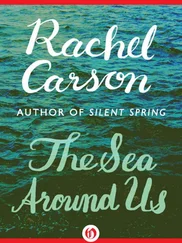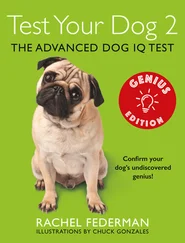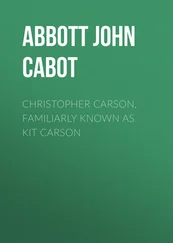Among them are many that are used in man’s war against nature. Since the mid-1940’s over 200 basic chemicals have been created for use in killing insects, weeds, rodents, and other organisms described in the modern vernacular as “pests"; and they are sold under several thousand different brand names.
These sprays, dusts, and aerosols are now applied almost universally to farms, gardens, forests, and homes—nonselective chemicals that have the power to kill every insect, the “good” and the “bad,” to still the song of birds and the leaping of fish in the streams, to coat the leaves with a deadly film, and to linger on in soil—all this though the intended target may be only a few weeds or insects. Can anyone believe it is possible to lay down such a barrage of poisons on the surface of the earth without making it unfit for all life? They should not be called “insecticides,” but “biocides.”
The whole process of spraying seems caught up in an endless spiral. Since DDT was released for civilian use, a process of escalation has been going on in which ever more toxic materials must be found. This has happened because insects, in a triumphant vindication of Darwin’s principle of the survival of the fittest, have evolved super races immune to the particular insecticide used, hence a deadlier one has always to be developed—and then a deadlier one than that. It has happened also because, for reasons to be described later, destructive insects often undergo a “flareback,” or resurgence, after spraying, in numbers greater than before. Thus the chemical war is never won, and all life is caught in its violent crossfire.
Along with the possibility of the extinction of mankind by nuclear war, the central problem of our age has therefore become the contamination of man’s total environment with such substances of incredible potential for harm—substances that accumulate in the tissues of plants and animals and even penetrate the germ cells to shatter or alter the very material of heredity upon which the shape of the future depends.
Some would-be architects of our future look toward a time when it will be possible to alter the human germ plasm by design. But we may easily be doing so now by inadvertence, for many chemicals, like radiation, bring about gene mutations. It is ironic to think that man might determine his own future by something so seemingly trivial as the choice of an insect spray.
All this has been risked—for what? Future historians may well be amazed by our distorted sense of proportion. How could intelligent beings seek to control a few unwanted species by a method that contaminated the entire environment and brought the threat of disease and death even to their own kind? Yet this is precisely what we have done. We have done it, moreover, for reasons that collapse the moment we examine them. We are told that the enormous and expanding use of pesticides is necessary to maintain farm production. Yet is our real problem not one of overproduction? Our farms, despite measures to remove acreages from production and to pay farmers not to produce, have yielded such a staggering excess of crops that the American taxpayer in 1962 is paying out more than one billion dollars a year as the total carrying cost of the surplus-food storage program. And is the situation helped when one branch of the Agriculture Department tries to reduce production while another states, as it did in 1958, “It is believed generally that reduction of crop acreages under provisions of the Soil Bank will stimulate interest in use of chemicals to obtain maximum production on the land retained in crops.”
All this is not to say there is no insect problem and no need of control. I am saying, rather, that control must be geared to realities, not to mythical situations, and that the methods employed must be such that they do not destroy us along with the insects.
The problem whose attempted solution has brought such a train of disaster in its wake is an accompaniment of our modern way of life. Long before the age of man, insects inhabited the earth—a group of extraordinarily varied and adaptable beings. Over the course of time since man’s advent, a small percentage of the more than half a million species of insects have come into conflict with human welfare in two principal ways: as competitors for the food supply and as carriers of human disease.
Disease-carrying insects become important where human beings are crowded together, especially under conditions where sanitation is poor, as in time of natural disaster or war or in situations of extreme poverty and deprivation. Then control of some sort becomes necessary. It is a sobering fact, however, as we shall presently see, that the method of massive chemical control has had only limited success, and also threatens to worsen the very conditions it is intended to curb.
Under primitive agricultural conditions the farmer had few insect problems. These arose with the intensification of agriculture—the devotion of immense acreages to a single crop. Such a system set the stage for explosive increases in specific insect populations. Single-crop farming does not take advantage of the principles by which nature works; it is agriculture as an engineer might conceive it to be. Nature has introduced great variety into the landscape, but man has displayed a passion for simplifying it. Thus he undoes the built-in checks and balances by which nature holds the species within bounds. One important natural check is a limit on the amount of suitable habitat for each species. Obviously then, an insect that lives on wheat can build up its population to much higher levels on a farm devoted to wheat than on one in which wheat is intermingled with other crops to which the insect is not adapted.
The same thing happens in other situations. A generation or more ago, the towns of large areas of the United States lined their streets with the noble elm tree. Now the beauty they hopefully created is threatened with complete destruction as disease sweeps through the elms, carried by a beetle that would have only limited chance to build up large populations and to spread from tree to tree if the elms were only occasional trees in a richly diversified planting.
Another factor in the modern insect problem is one that must be viewed against a background of geologic and human history: the spreading of thousands of different kinds of organisms from their native homes to invade new territories. This worldwide migration has been studied and graphically described by the British ecologist Charles Elton in his recent book The Ecology of Invasions. During the Cretaceous Period, some hundred million years ago, flooding seas cut many land bridges between continents and living things found themselves confined in what Elton calls “colossal separate nature reserves.” There, isolated from others of their kind, they developed many new species. When some of the land masses were joined again, about 15 million years ago, these species began to move out into new territories—a movement that is not only still in progress but is now receiving considerable assistance from man.
The importation of plants is the primary agent in the modern spread of species, for animals have almost invariably gone along with the plants, quarantine being a comparatively recent and not completely effective innovation. The United States Office of Plant Introduction alone has introduced almost 200,000 species and varieties of plants from all over the world. Nearly half of the 180 or so major insect enemies of plants in the United States are accidental imports from abroad, and most of them have come as hitchhikers on plants.
In new territory, out of reach of the restraining hand of the natural enemies that kept down its numbers in its native land, an invading plant or animal is able to become enormously abundant. Thus it is no accident that our most troublesome insects are introduced species.
Читать дальше


